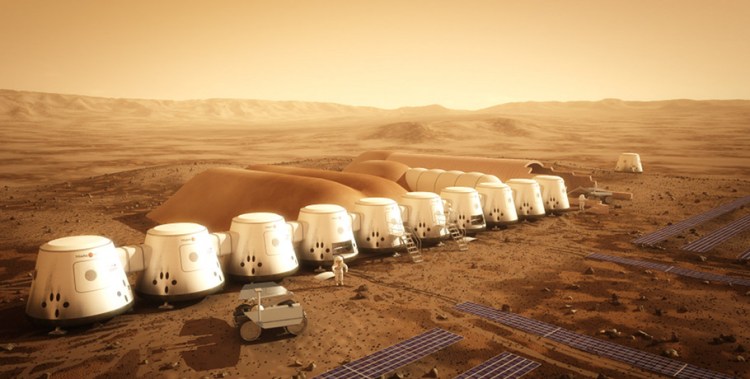More than 199,000 people had their dreams of going to Mars (and never returning) crushed today.
Mars One dramatically slashed its applicant pool, whittling the candidates from 200,000 down to 1,058, meaning only one-half-of-one percent of applicants made the cut.
Of the chosen few, 586 are male and 472 are female. A majority of the selected candidates are between the ages of 26 and 35, although 10% of the pool are currently over 46 years old. 43% of candidates hail from the Americas, and American is by far the dominant nationality, with 297 people.
Mars One is a private organization dedicated to setting up a permanent, self-sustaining colony on Mars. The project is the stuff of science fiction — either an exciting and achievable vision or an absurd boondoggle, depending on who you ask.
Either way, it has attracted tremendous interest from people apparently willing to spend the rest of their days as a science experiment in a dusty, desolate, oxygen-poor environment. More than 78,000 people from 120 countries submitted applications in the first two weeks, when Mars One first opened up applications in April.
The conditions on Mars are tough and the community will be small. Mars One expects to send four people every two years to expand and nurture the colony. Settlers will explore the Martian surface, conduct experiments, farm, and build structures. They will also have to operate and monitor all the systems and communicate with mission control.
To qualify, astronauts must be intelligent, creative, physically healthy, and psychologically stable — although how stable can you be if you’re signing up to be shipped to another planet? Mars One outlines the five key characteristics as resiliency, adaptability, curiosity, ability to trust, and creativity/resourcefulness.
However in an interview with VentureBeat earlier this year, Mars One CEO Bas Landsdorp said the main criteria for colonists is the ability to work well in a group.
“Our medical director ensured me that the difficult part is living on a new planet with a small group of people in a dangerous environment and staying friends,” Lansdorp said “It’s the most dangerous part. … So we’re not looking for engineers and pilots. We’re looking for people who have this inherent quality, being the kind of person you want to be stranded with. We can teach them any skill they need to have. Basically, what they need to do is survive. Anything that breaks, a machine or a person, it needs to be fixed. That’s the most important thing they need to learn.”
Apparently, 99.5 percent of applicants did not meet these baseline criteria, and Mars One will continue to narrow the pool in 2014.
“The next several selection phases in 2014 and 2015 will include rigorous simulations, many in team settings, with focus on testing the physical and emotional capabilities of our remaining candidates,” Mars One’s Chief Medical Officer Norbert Kraft said. “We expect to begin understanding what is motivating our candidates to take this giant leap for humankind.”
Mars One’s first human mission is not expected to depart until 2024, and there is a lot of work that must happen in the meantime. The non-profit anticipates that the project will require $6 billion in funding, to come through donations as well as sponsorships, broadcasting rights, and advertising.
There are also those, such as NASA chief Brian Muirhead (who knows a thing or two about space travel), who say Mars One’s mission is “way beyond our capability to do today.”
Mars One and its supporters think otherwise, and they’ll spend 2014 trying to convince the world that this is possible.


